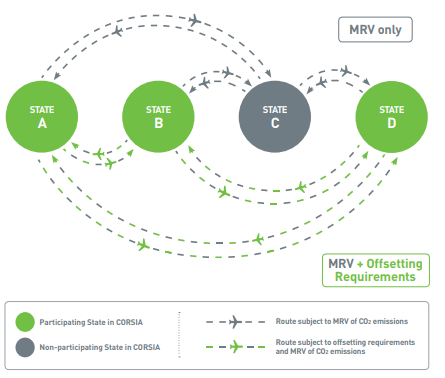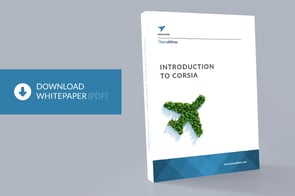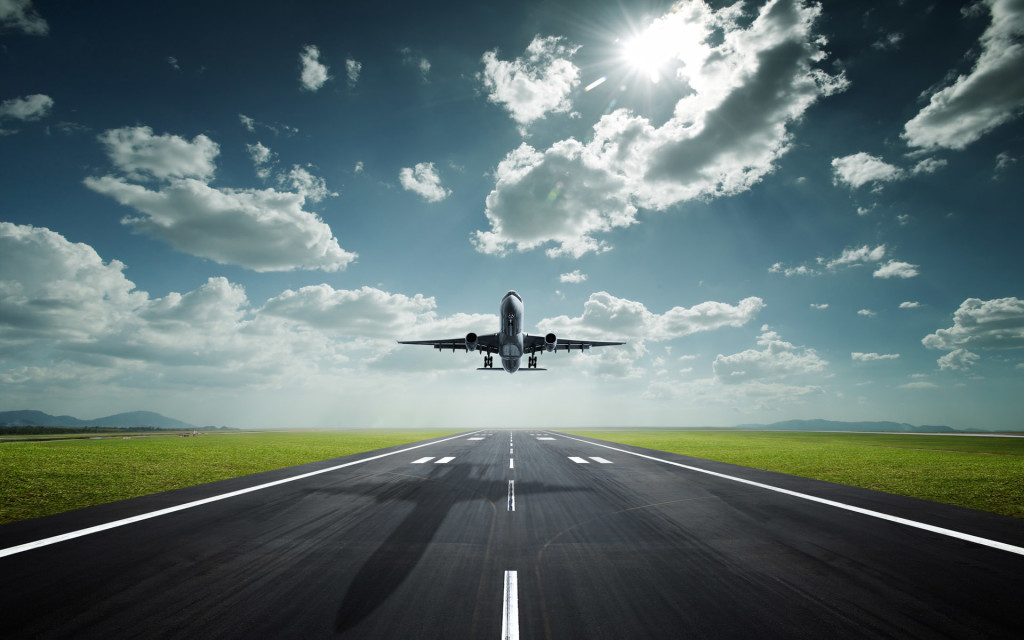Introduction to CORSIA: What is it and how to prepare?
From 2019 onwards, airlines need to monitor their CO2 emissions for international flights.
Are you still feeling unclear about what CORSIA is and how you should prepare? Time to get more familiar with it!
The environmental impact of aviation
According to IATA, civil aviation represents 2% of global CO2 emissions from human activity. The aviation sector is one of the most energy and carbon intensive forms of transport, and must limit its impact on climate change, despite its continual growth.
The objective is to reduce aviation net CO2 emissions to 50% of 2005 emissions by 2050. This translates in improving fuel efficiency by 1.5% annually until 2020, and then stabilizing the CO2 emission from 2020 onwards.

Source: IATA, Technology Roadmap
To stabilize the CO2 emissions, with a growing air traffic passenger demand (between 5 and 8% since 2010), the aviation industry relies on a four-pillar strategy:
- Technology improvements such as engine performance or biofuels
- Operational improvements such as fuel efficiency monitoring
- Infrastructure improvements such as more efficient airport infrastructures
- Market-based scheme which is CORSIA
What is CORSIA?
CORSIA stands for Carbon Offsetting and Reduction Scheme for International Aviation. It is the first global scheme covering an entire industry.
CORSIA was adopted by ICAO in October 2016 as one of the four pillars used to reduce aviation net CO2 emissions.
It is a market-based scheme by which airlines compensate their international flights CO2 emissions by purchasing carbon offsets. A carbon offset is a credit for carbon reductions made by one party that can be purchased to compensate the emissions generated by another party.
CORSIA is a global and unique scheme for airlines worldwide to comply with their CO2 emissions obligations.
How will CORSIA work?
CORSIA is a route-based approach, to ensure fairness between airlines on a same route
ICAO has defined a set of rules covering calculation methods and reporting rules. Each state will implement CORSIA in their own regulations. Some states will not participate in CORSIA, if their international traffic is relatively low or for socio-economical reasons.
CORSIA defines a baseline, calculated from the 2019 and 2020 emissions on international routes. When CORSIA’s offsetting stage starts, all emissions over this baseline will have to be offset. This will allow stabilizing CO2 emissions.
What does it mean for airlines?
Airlines will have to monitor ALL their civil international flights, including flights to or from non participating states. Though they will be required to offset emissions only for flights between participating states. As such, one should distinguish between the Reporting Scope and the Offsetting scope:
- Reporting scope: ALL international civil flights
- Offsetting scope: Covered route (routes between participating states)

Source: ICAO “CORSIA Implementation Plan”
In our next blog articles dedicated to CORSIA, you’ll learn more about:
- Who needs to be participating in the scheme?
- What are the key dates?
- How to monitor, report and verify your CO2 emissions?
In the meantime, watch this video to know more about CORSIA implementation:
READ MORE
You want to go further on CORSIA? Download the white paper:




